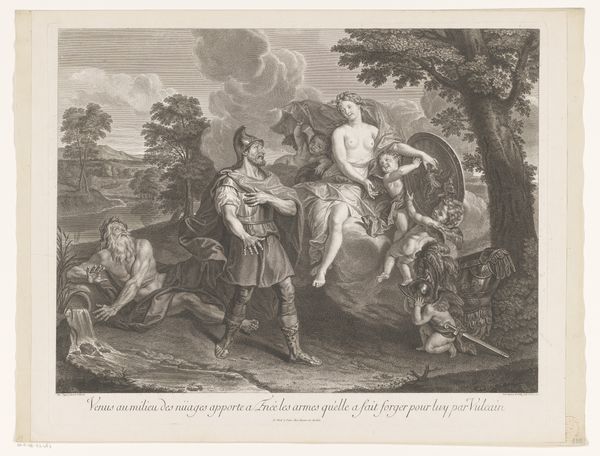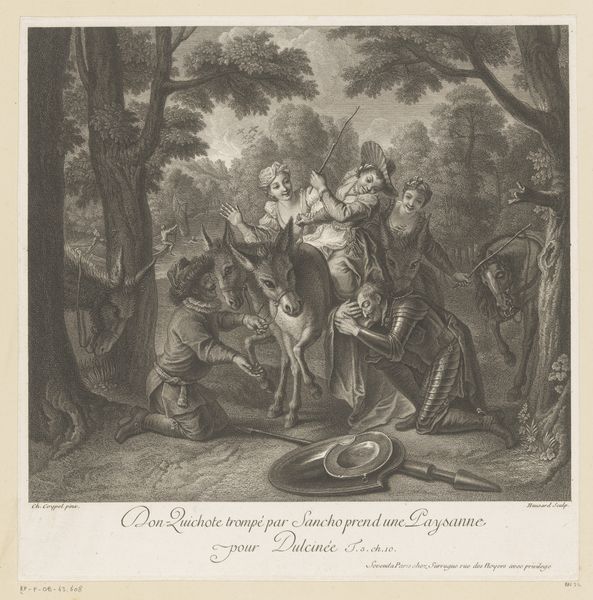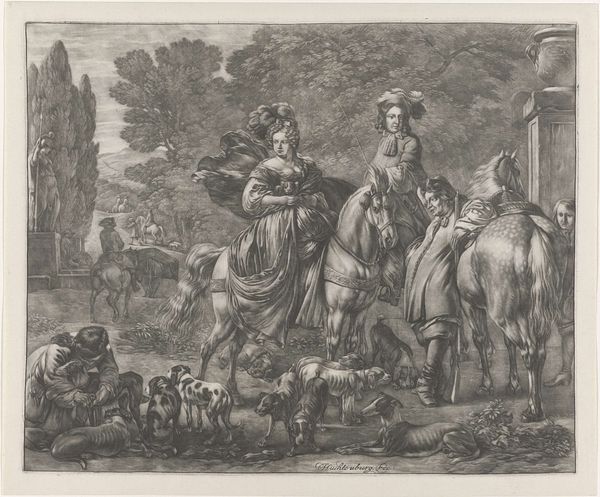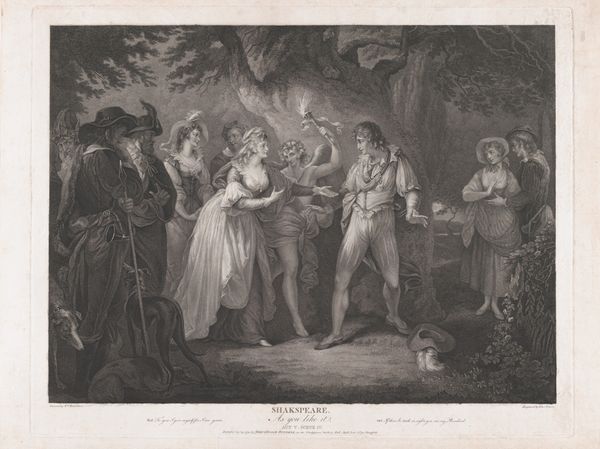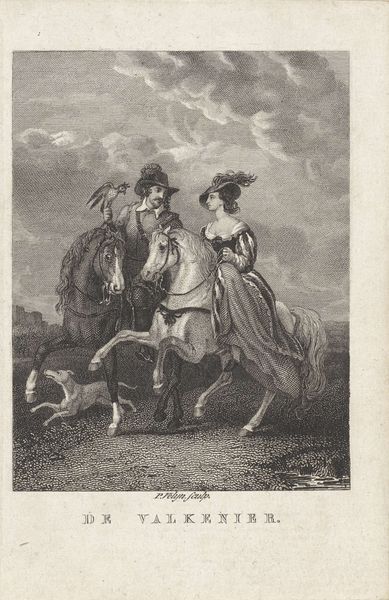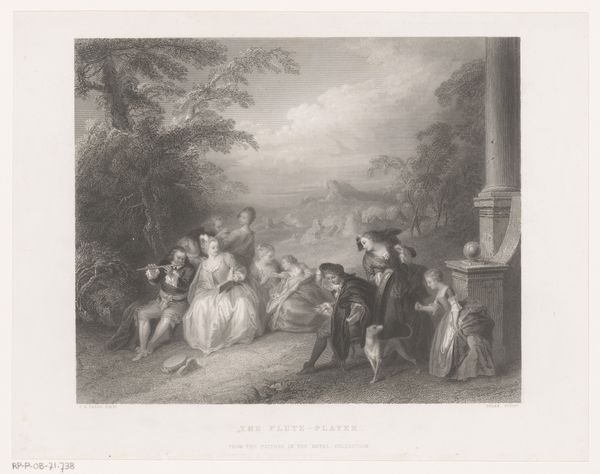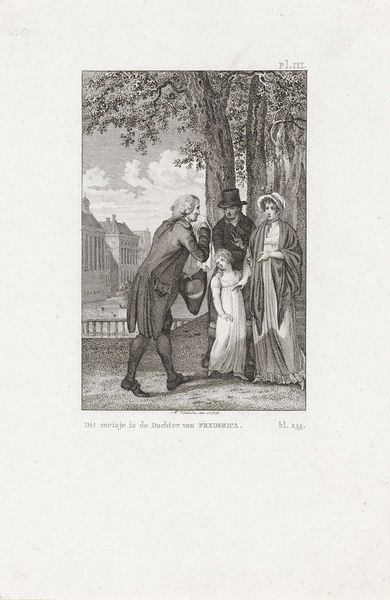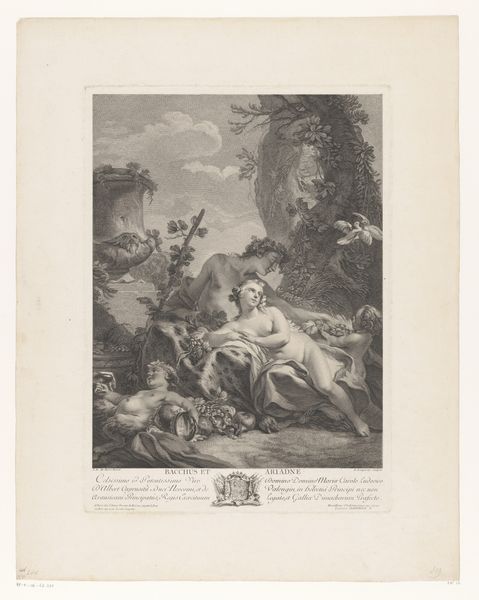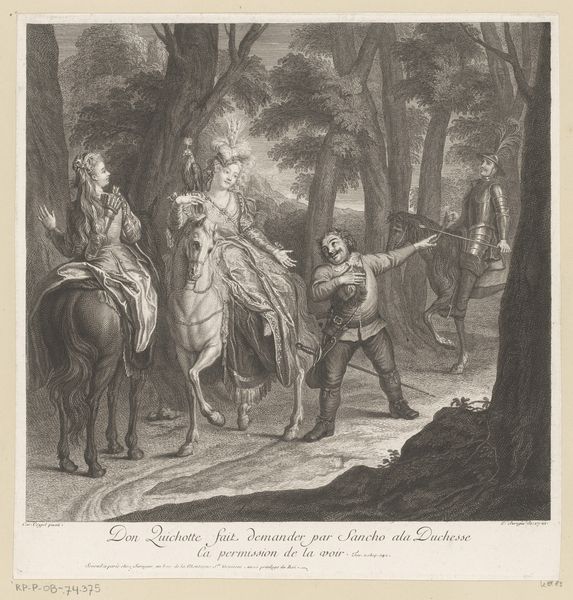
print, etching, graphite, engraving
#
pencil drawn
#
light pencil work
#
photo restoration
# print
#
etching
#
pencil sketch
#
landscape
#
graphite
#
pencil work
#
history-painting
#
graphite
#
engraving
Dimensions: height 211 mm, width 292 mm
Copyright: Rijks Museum: Open Domain
This print depicting Jacoba of Bavaria's escape from Ghent was made by Johann Wilhelm Kaiser, sometime in the 19th century. It's an etching, a printmaking technique which relies on the corrosive power of acid to bite lines into a metal plate. Think about the labour involved: the artist would have coated a copper or zinc plate with a waxy, acid-resistant substance, then drawn the image with a sharp needle, exposing the metal underneath. Then, the plate was immersed in acid, which ate away at the exposed lines. The longer the plate was exposed, the deeper and darker the lines would be. To produce the print, ink was applied to the plate, then wiped off the surface, remaining only in the etched lines. Finally, the plate and a sheet of paper were run through a high-pressure printing press. Etchings like this one democratized image production. They allowed for detailed storytelling, and made art more accessible to a wider audience. It's a great example of how craft and industrial processes can come together to shape our understanding of history.
Comments
No comments
Be the first to comment and join the conversation on the ultimate creative platform.
